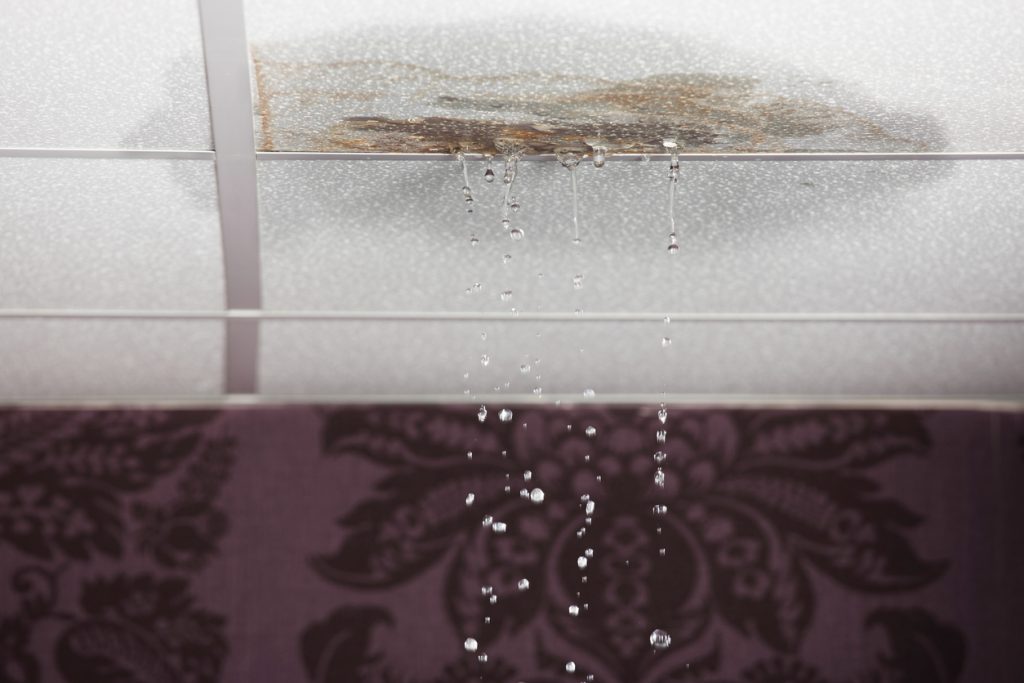Water damage is stealthy. A pipe can burst and create serious problems. Usually, water in unexpected places slowly degrades structural elements over long periods of time.
The causes of this damage are many. The results are disastrous. Unaddressed moisture always balloons. But if you catch damage in its early stages, you can get a professional to deal with the matter before the issue blows up into expensive proportions.
But preventing disaster and damage will also require keeping an eye out for urgent signs of water damage you can’t afford to overlook.
Water Stains in the Ceiling
Stains in the ceiling are likely indicators of damage resulting from water. Often, stains appear to be peeling paint.
The stains are usually light or dark brown but may also be green, orange, or yellow. If black, you could be looking at mold, which is a whole other situation.
The culprit here could be any number of things. You might have a leak in a radiator or pipe seeping through the floor and into the ceiling below.
Faulty plumbing could allow water to escape. That saturates the ceiling and develops mineral deposits. Hardness in water supplies, showing up as chalky substances in pipes and faucets, tighten pipe cavities and even eat into piping. That results in dripping and water stains.
The only way to get a thorough inspection and solution is by hiring a professional that knows where to look for the cause of damage.
Your Wood Floors Are Buckling
Hardwood floors are susceptible to moisture. With moisture, you see buckling in cupped edges, cracks between and in the boards, crowning (floorboards warped in the center), and lifting (components pull away from the subfloor).
Buckling occurs because moisture sets in the structure. The damage happens suddenly and over time.
Everything from fluctuations in indoor humidity to spills can lead to gradual floorboard damage.
Bubbling or Soft Drywall
Wet drywall turns mushy and inflates, creating air pockets in the structure. That’s because drywall is porous and absorbs moisture. The layers separate, split, and pull away from the wall. The reaction is the result of leaking water and nothing less. But knowing that doesn’t mean the extent of the damage is obvious to the human eye.
You need a deft touch for a thorough investigation of drywall damage. The water in the wall could be traveling from any number of places. Professionals use technology that finds issues and prevents knocking out a wall. The process minimizes the bill on your end and offers a faster way to solve the problem.
Mold
There is something a lot of property owners don’t know about mold.
You can’t permanently get rid of mold. It’s as natural as flowers and mosquitoes. When it’s out of control, mold exacerbates many health issues. Homeowners can deal with small amounts of mold, but extensive damage needs expertise. You want professionals who can uncover hidden leaks, electrical hazards, and high levels of oxidation.
Risks of Water Damage
The damage weakens your structures and creates long-term defects that diminish property value and comfort. It creates unpleasant odors that influence diminished indoor air quality. The odors are often serious signs of toxic mildew and mold growth.
Here are a few of the health risks linked to structural damage caused by water.
- Asthma
- Chest Tightness
- Chronic Cough
- Development of Asthma
- Fever
- Headaches
- Red or Itchy Eyes
- Shortness of Breath
- Stuffy Nose
- Wheezing
When it comes to water restoration, Strongwater Restoration is the first responder. Since 1963, we’ve given our customers comprehensive remediation and restoration services throughout New York City and its surrounding neighbors. If you see signs of damage coming from water, reach out for a consultation and free estimate today.




